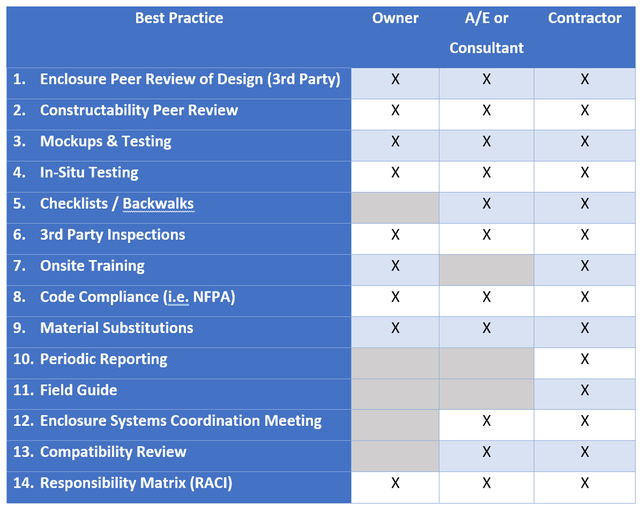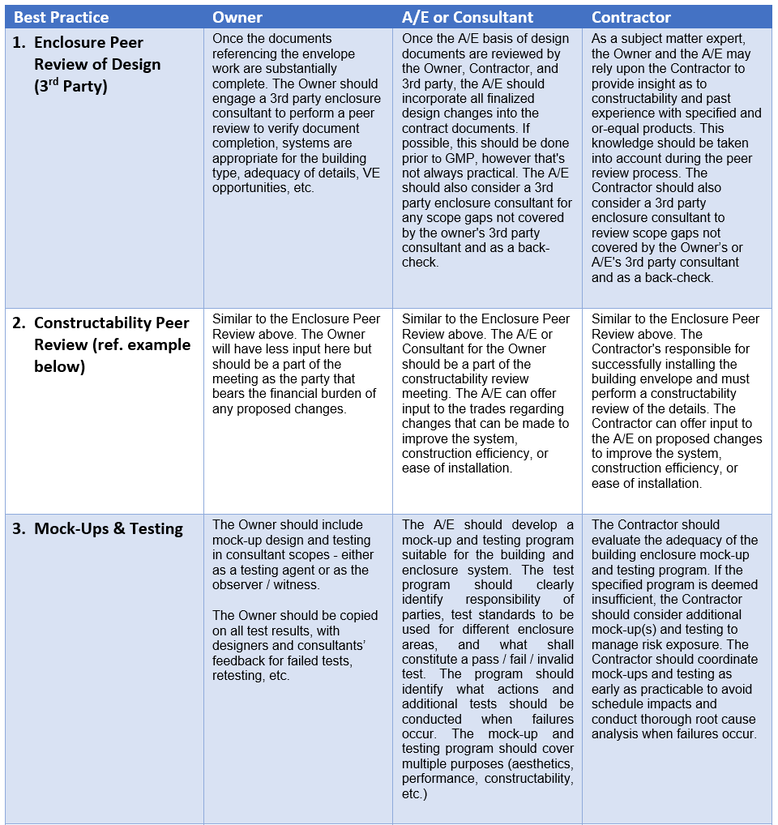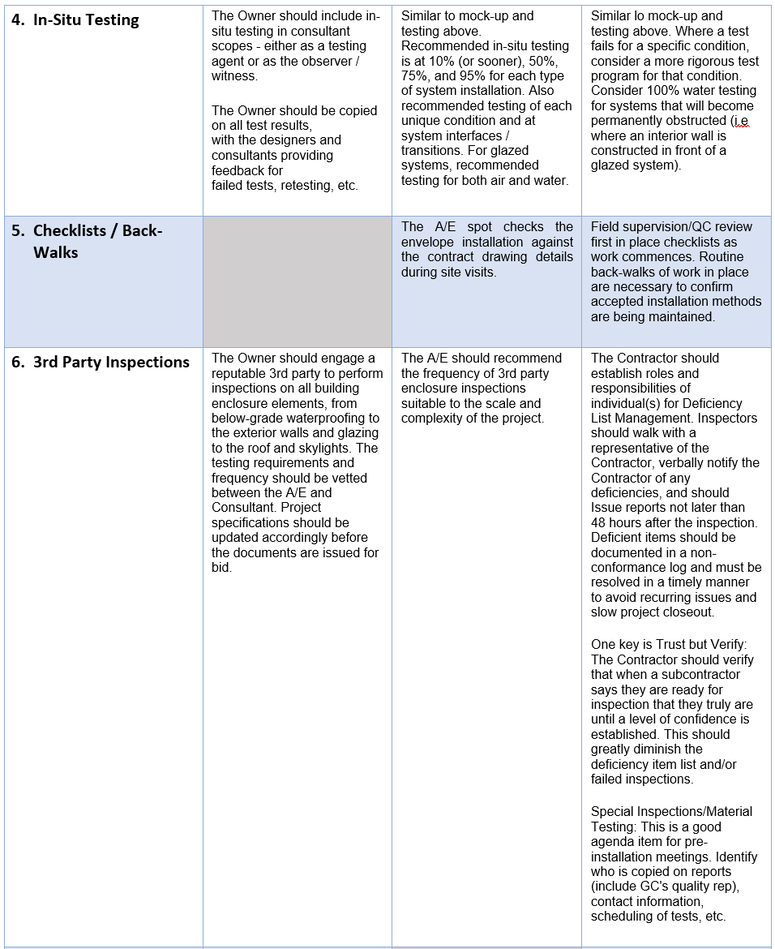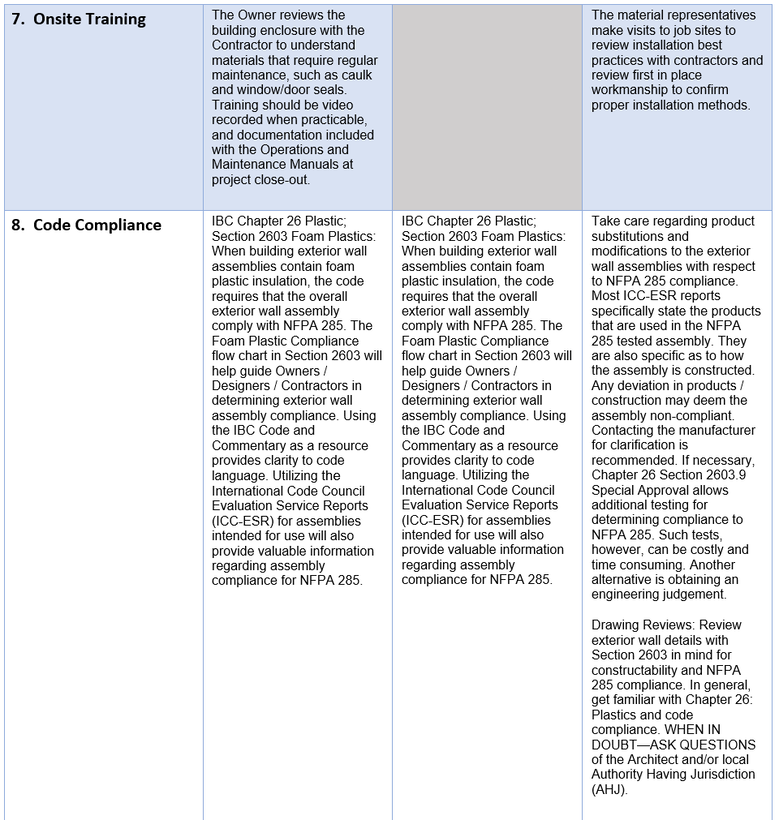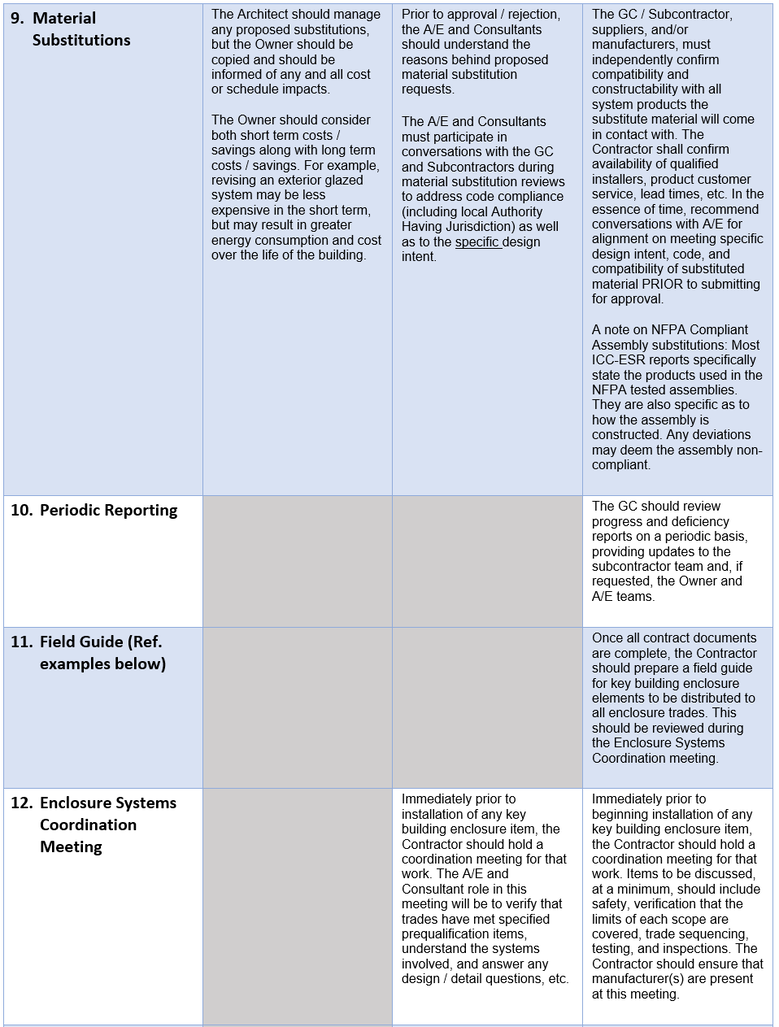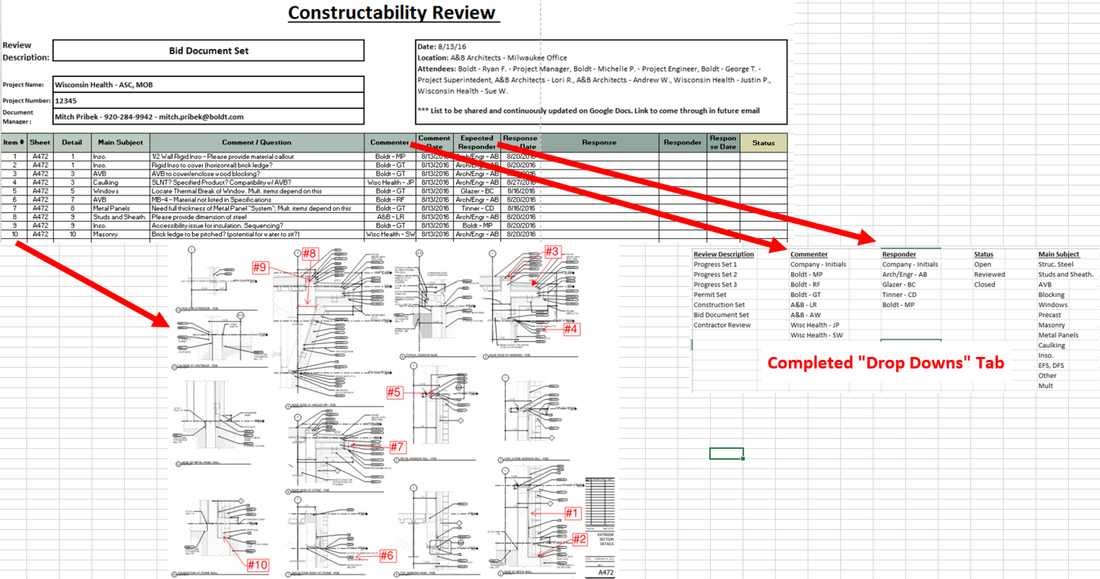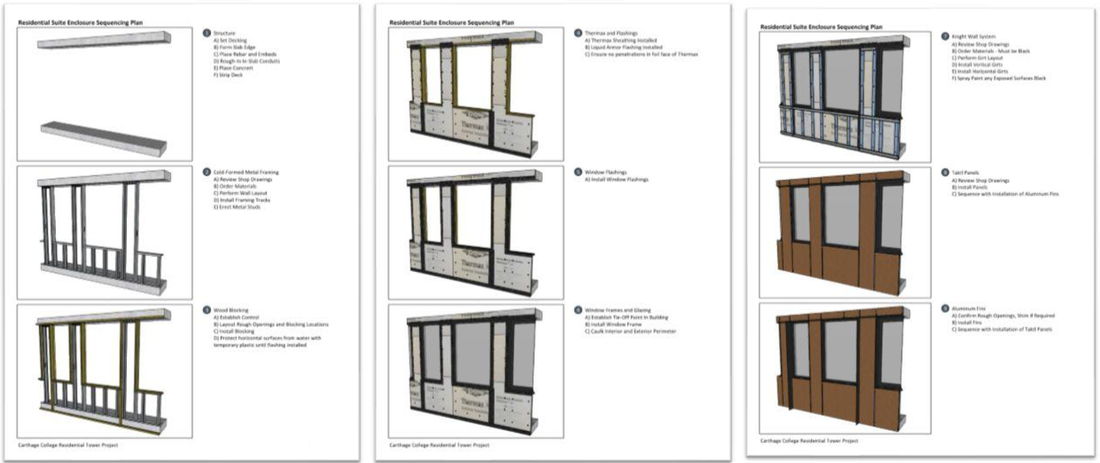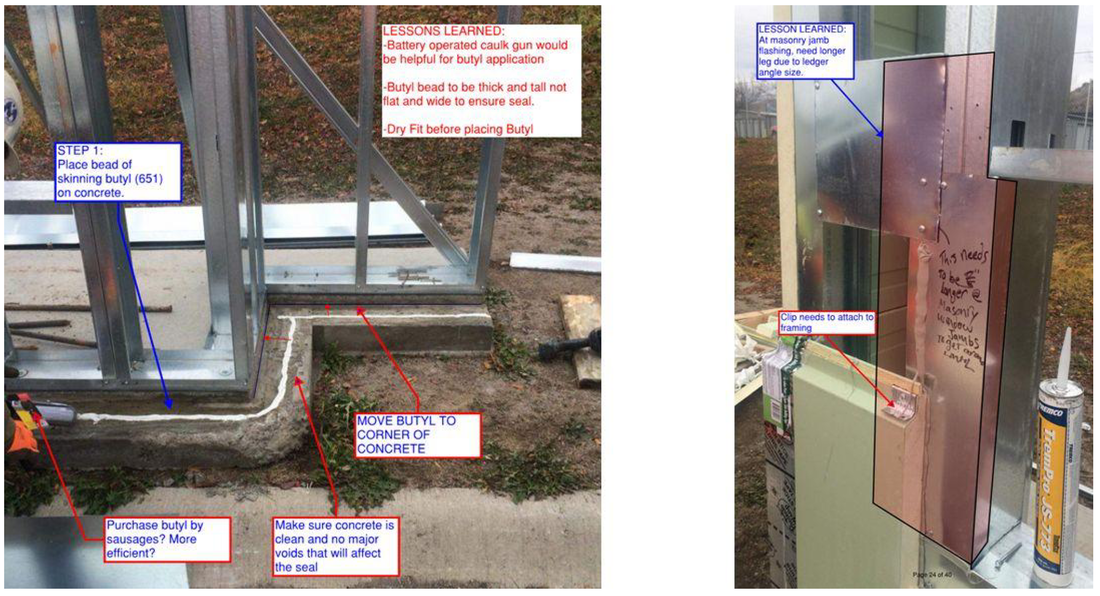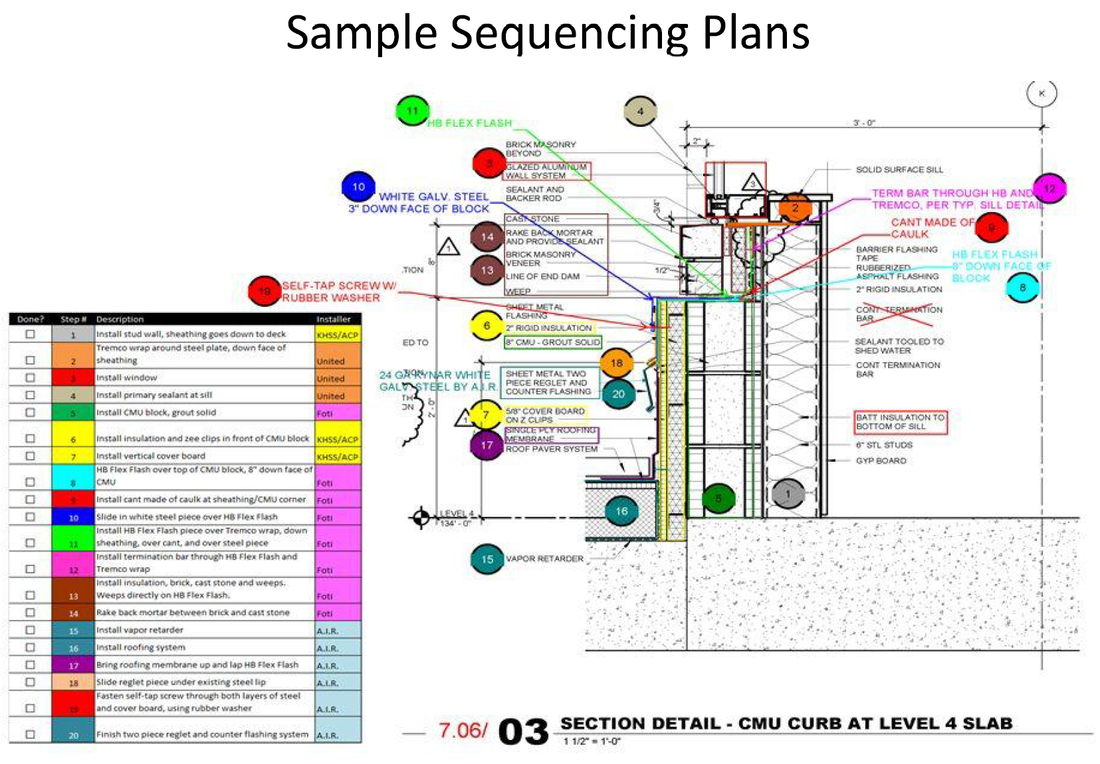Achieving and Executing a Successful Building Envelope
Best Practices, Roles, and Responsibilities
Best Practices, Roles, and Responsibilities
CQEC Development Team: Chris Hauska, Sue Klawans, Chad Dorgan, Matt Biehl, Angelo Trapani, and Mike Stajduhar.
Purpose
Building enclosure systems include any component that is intended to keep outside air and water from entering a building. It includes roof assemblies, below grade waterproofing, exterior walls and glazing, skylights, air/vapor barrier systems , etc. When such elements are defective with respect to design or installation, a loss of building efficiency and water intrusion leading to damage may occur. Furthermore, repairs of defective building enclosure systems can be very challenging and costly.
For these reasons, it is important that building enclosure systems are properly designed and installed. Coordination and installation can be challenging since building enclosures include multiple trades and are often designed and field assembled from numerous materials (where chemical compatibility must also be considered) that include many interfaces.
The purpose of this document is to provide best practice guidance for all stakeholders associated with the building enclosure. Creating a clear definition of roles and responsibilities will help to assure the end result is a building enclosure that performs as intended.
The following best practices, relative to the building enclosure, are included as a guide. Building enclosures are designed by the Owner's Architect/Engineer or design-build team (depending on contract delivery method). Through coordinated and collaborative efforts with the Owner, Designer, General Contractor, Specialty Trades, and Building Enclosure Consultants, defects can be minimized or avoided.
Purpose
Building enclosure systems include any component that is intended to keep outside air and water from entering a building. It includes roof assemblies, below grade waterproofing, exterior walls and glazing, skylights, air/vapor barrier systems , etc. When such elements are defective with respect to design or installation, a loss of building efficiency and water intrusion leading to damage may occur. Furthermore, repairs of defective building enclosure systems can be very challenging and costly.
For these reasons, it is important that building enclosure systems are properly designed and installed. Coordination and installation can be challenging since building enclosures include multiple trades and are often designed and field assembled from numerous materials (where chemical compatibility must also be considered) that include many interfaces.
The purpose of this document is to provide best practice guidance for all stakeholders associated with the building enclosure. Creating a clear definition of roles and responsibilities will help to assure the end result is a building enclosure that performs as intended.
The following best practices, relative to the building enclosure, are included as a guide. Building enclosures are designed by the Owner's Architect/Engineer or design-build team (depending on contract delivery method). Through coordinated and collaborative efforts with the Owner, Designer, General Contractor, Specialty Trades, and Building Enclosure Consultants, defects can be minimized or avoided.
Best Practice Role Matrix
Best Practice Responsibilities
Constructability Peer Review Example
Virtual Mockup Examples
Field Guide Examples Based on Mock-ups &Testing
Sample Sequencing Plan
The Construction Quality Executives Council (CQEC) is an industry organization composed of Quality Leaders from design and construction firms with formal Quality Programs. The goal of the CQEC is to advance the art and science of quality in the built environment through publications, education and research. The information and views expressed in this document is that of the CQEC and not that of the member’s company. This document is copyrighted (2018©) and the CQEC grants permission to reproduce and distribute as long as credit to the source document and CQEC is maintained.

